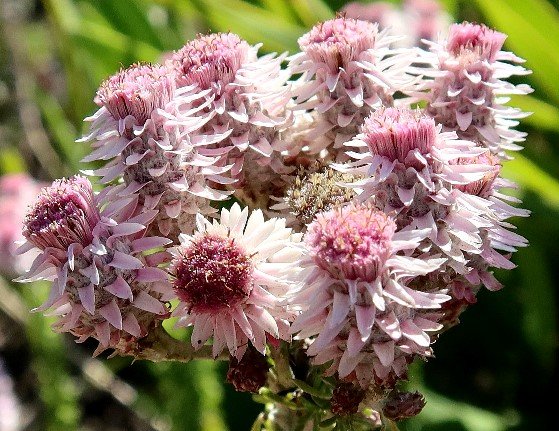Lachnospermum umbellatum

Author: Ivan Lätti
Photographer: MC Botha
Lachnospermum umbellatum, in Afrikaans commonly the rooiblombos (red flower bush) or gifknoppies (little poison knobs), is a stiff shrublet with grey-woolly to felted, erect branches that reach heights from 30 cm to 45 cm. The multistemmed plant resprouts after fire from a woody base.
The simple, sessile, ericoid leaves are narrowly oblong, growing in tufts and twisted. Their margins are often rolled in, the upper leaf surface grooves woolly, the lower surfaces dark green and glossy.
The reddish, cylindrical flowerheads grow in compact, flat-topped umbels at stem-tips. The peduncles of the about twelve heads per umbel are short. Several rows of woolly-haired involucral bracts around the disc florets of each head bend their pale to bright pink, papery tips back, away from the cylinder. An umbel is less than 10 mm in diameter.
The about twenty tiny disc florets in each head are tubular, their petals purple. There are no ray florets. Pink bristles surround the florets. Yellow anthers and bilobed styles are at times exserted from the florets.
The generic name, Lachnospermum, is derived from the Greek word, lachne, meaning soft, woolly hair or down and spermum meaning seed, referring to the plant’s hairy fruit and seed.
Flowering happens from late spring through summer or to early autumn.
The species distribution is small in the far southwest of the Western Cape, from the Cape Peninsula to around Caledon and Hermanus.
The habitat is moist, sandy, lower fynbos slopes. The species is not considered threatened in habitat early in the twenty first century (Marais, (Ed.), 2017; Manning, 2007; Bond and Goldblatt, 1984; Andrew, 2017; iNaturalist; https://www.fernkloof.org.za; http://pza.sanbi.org; http://redlist.sanbi.org).

